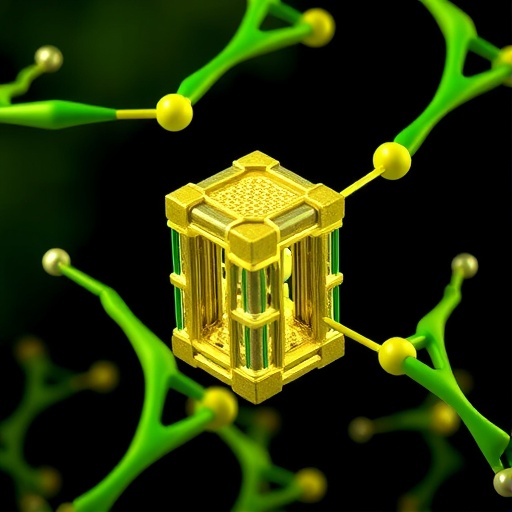In an evolving world where renewable energy solutions continuously gain traction, researchers are assessing innovative approaches to energy storage systems. Recent findings published in Ionics reveal a groundbreaking leap in supercapacitor technology, integrating biomass waste-derived activated carbon and nickel-doped α-Bi₂O₃. This research could potentially reshape the way we perceive energy storage and simultaneously address waste management issues. The innovative nature of the study emphasizes not only scientific advancement but also the intersection of environmental sustainability and high-performance energy solutions.
The significance of effective energy storage cannot be overstated. As renewable energy sources proliferate, the need for efficient methods to store energy becomes crucial. Supercapacitors, renowned for their rapid charge/discharge capabilities, have emerged as a favorable alternative to traditional batteries. They bridge the gap between capacitance and energy density, making them invaluable for various applications, ranging from electric vehicles to portable electronics. The integration of activated carbon technology further enhances their potential by optimizing performance metrics.
This research specifically targets the modification of biomass-derived activated carbon with nickel-doped α-Bi₂O₃. Biomass waste, often dismissed as mere refuse, emerges as a promising feedstock in the formation of activated carbon. This unconventional approach not only generates useful materials but also mitigates the environmental impact of biomass waste. The decision to employ nickel-doped α-Bi₂O₃ as a modifier is pivotal, given its recognized role in enhancing electronic conductivity and electrochemical performance.
The experimental methodologies applied in this study showcase a meticulous approach to developing high-performance supercapacitor electrodes. The authors sequentially developed activated carbon from biomass waste, then incorporated nickel-doped α-Bi₂O₃ into the matrix. This two-step process ensured that the resulting electrodes achieved optimal performance characteristics without compromising the benefits of the biomass-derived starting material.
An essential aspect of the study involved rigorous testing of electrochemical properties. Voltage stability, charge/discharge cycles, and energy density were scrutinized to categorize the viability of the newly formulated supercapacitors. Initial results demonstrated significantly enhanced performance metrics, with improved capacitance and cycle stability compared to conventional electrodes. Such findings underscore the potential applications for the technology, particularly in environments requiring rapid energy bursts and prolonged longevity.
Further highlighting the eco-friendly nature of this research, the team emphasizes the dual advantages of using biomass waste. As society grapples with the growing demands for energy alongside increasing waste output, developing sustainable strategies for repurposing waste into high-value products is paramount. This innovative solution represents a circular economy model that can potentially inspire similar endeavors across various sectors.
Accessibility to this technology, particularly in developing regions, was a topic of discussion as well. The use of locally sourced biomass waste could facilitate the production of activated carbon and supercapacitors without the need for costly materials or processes. This democratization of technology holds promise for advancing energy solutions in rural and underdeveloped areas where energy storage might be a challenge.
The team’s exploration of the morphological and structural characteristics of the developed materials revealed intriguing insights. Detailed analysis through techniques such as scanning electron microscopy (SEM) and transmission electron microscopy (TEM) provided clarity on the enhanced surface area and porosity attributed to the activation process. This structural understanding is crucial as it directly correlates with the performance enhancements seen in the electrochemical tests.
In terms of environmental impact, the significance of this research lies in its potential scalability. The methodologies adopted in this study can be adapted and expanded to include various types of biomass waste, broadening the applicability of the technology. Enhanced collaboration and investment in biomass conversion technologies could lead to widespread adoption, ultimately contributing to cleaner energy solutions and reduced waste.
Collaboration among interdisciplinary teams was vital for the success of this research project. The confluence of materials science, environmental engineering, and electrochemistry demonstrates how diverse expertise can facilitate breakthroughs in energy technologies. Such interdisciplinary partnerships will likely be fundamental to addressing complex global challenges, from energy transitions to climate change.
As legacy energy storage methods face scrutiny over limitations in energy density and environmental impact, this innovative research provides a promising pathway to the future of energy storage. With potential applications exponentially increasing, the paradigm of energy storage is poised for transformation, catalyzed by biomass waste-derived innovations.
In conclusion, the results outlined in this study not only pave the way for advancements in supercapacitors but also highlight a crucial dialogue about sustainability and resource optimization. As technical progress continues to intersect with environmental responsibility, academic and industrial spheres alike are urged to explore opportunities for collaboration, fostering innovation that respects both our planet and its needs.
The future of energy storage remains bright, and as researchers like Venkatesan, Franklin, and Fathima delve deeper into the intersections of sustainability, waste management, and advanced materials, we can anticipate a plethora of innovations that may redefine our energy landscape. The shift towards a more sustainable and effective energy system is not just an aspiration; it is a necessity that merits immediate attention and support.
With such compelling findings, the energy storage community should take notes and consider the implications of this research. The possibilities are endless, promising a cleaner, more efficient future built on the foundations of reciprocal care for humanity and the environment alike.
Subject of Research: Biomass Waste-derived Activated Carbon for Supercapacitors
Article Title: Biomass waste-derived activated carbon modified with nickel-doped α-Bi2O3 for high-performance supercapacitor electrodes.
Article References:
Venkatesan, J., Franklin, J.B., Fathima, J.P.R. et al. Biomass waste-derived activated carbon modified with nickel-doped α-Bi2O3 for high-performance supercapacitor electrodes. Ionics (2025). https://doi.org/10.1007/s11581-025-06686-3
Image Credits: AI Generated
DOI: https://doi.org/10.1007/s11581-025-06686-3
Keywords: Biomass, Supercapacitors, Activated Carbon, Nickel-doped α-Bi₂O₃, Energy Storage, Sustainability.




